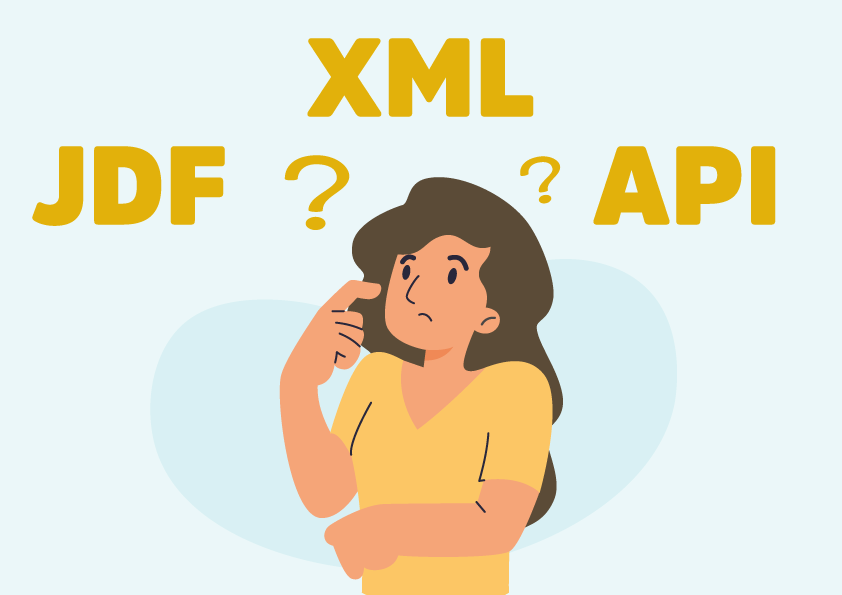Why your customers need you to be experts on marketing automation software
Printing companies need to embrace marketing automation software. Not just so that they can optimize their own sales and marketing efforts, but so they can offer guidance on the subject to their own customers.
According to whattheythink.com, printers are in the best place to position themselves as trusted advisors for small to medium-sized businesses without any in-house marketing expertise: “SMBs have reported that commercial printers, office superstores, and online printing services are their go-to resources for marketing services. SMBs, especially on the smaller side, show a preference for “one-stop-shop” solutions that can meet all of their marketing needs and goals."
"As this market matures and SMBs increasingly turn to technology to help augment their resource loads and optimize their efforts, service providers will need to step up to the plate.”
And so, printers need to be able to advise their customers on these automation platforms, to be able to talk about the different solutions available and give guidance on how to use them to track printed campaigns.
![]()
In learning you will teach, and in teaching you will learn
Only by using marketing software can a printing company learn the best way to track, monitor and measure print the way that digital channels are. Having this ability will allow you to prove the value of print to your customers with hard data, and it will give you the expertise to help your customers implement their own marketing software.
These articles from Hubspot and Teamgate are a good place to start to see how marketing software can be used to track the ROI of print campaigns. In essence, print must always direct the prospect online so they can be tracked throughout the process.
Whattheythink.com also points out that smaller customers are more than open to investing in this type of software: “SMBs are aggressively seeking out systems to centrally manage marketing efforts, enhance sales productivity, increase the sales pipeline, and ultimately drive improved business results. Print service providers have a leading edge when it comes to serving the needs of SMB marketers because the structure to fulfill printing needs is already in place.”
So it’s time for print service providers to get familiar with these marketing automation platforms and become trusted advisors on how to use them for print.

THERE ARE SO MANY PROVIDERS OUT THERE, HOW DO I DECIDE WHICH ONES TO LOOK AT?
Our advice is that you should consider these 5 key aspects when selecting any software platform:
- Price – make sure the software platform you're looking at is going to fit into your budget.
- Time – some platforms require more time investment than others, so make sure you investigate the resource implications of installing each option.
- Use Case – make sure the platform you're thinking of adopting can do the things you want it to be able to do. Write a list of features and assign them a MoSCoW value (Must, Should, Could, Won’t) for each platform to help you assess which one meets your needs best.
- Integration – do you want to integrate the platform with your other software? Make sure it’s possible by checking with your MIS partner and other suppliers.
- Reporting – one of the most important things to look into if you want to prove the ROI of your campaigns, so make sure the reporting system on the software can provide you with the data you need.
An overview of the three most popular marketing automation providers
To help you familiarize yourself with the type of solutions that are on the market, we’ve researched three of the most popular software platforms and summarized what we found. There are many other providers out there to choose from, but the 3 we selected all have an open API, which means you can integrate them with your MIS. We go into more detail about this below.
Marketo is a good option for medium to large-sized companies. It started life as a lead management tool so it’s aimed primarily at B2B companies. It's split into 5 main modules which can either be purchased separately or purchased together in an integrated platform.
Integration for Marketo gives you access to over 550+ integration partners. They also have an API for customers who want to build their own integrations.
The top benefits of Marketo are its advanced analytics and workflows. It’s apparently a really great tool for tech-savvy users who like to dig into the advanced features and really investigate what they can do with it.
Hubspot started off as a blogging and social media platform but has now grown into an all-in-one website, social media, marketing, and CRM solution. It's more consumer-focused than Marketo and so is suitable for both B2B and B2C companies.
The solution has proven popular because of its intuitive UI and low starting cost (with free CRM tools available). It's priced according to scale (Free, Starter, Professional, and Enterprise), so it’s a good option for smaller companies who want to start off with a low cost and build up as they grow.
Hubspot has over 750 integrations and offers native integration with Salesforce and Zapier. Users can also develop their own using the open API.
Pardot is a B2B specific marketing automation platform and its current features center around email marketing, lead generation, and marketing automation. The company is owned by Salesforce, which means that it offers some of the best Salesforce CRM features in the industry. It’s definitely worth a look if you already use Salesforce as your CRM.
Pardot has a similar pricing structure to HubSpot. Starting with Growth, then Plus, Advanced, and Premium.
Taking it one step further - Integrating your marketing software with your MIS
Each of the above platforms has an API so it’s possible to integrate them with your MIS and synchronize information about your customers, prospects, and opportunities. We already have an existing integration with HubSpot, which allows users to have this synchronicity - your sales, marketing, and estimating teams will all be looking at the same data, and updating it in one place will update it everywhere.
The integration also allows estimators and CSR teams to enroll contacts in pre-defined marketing workflows. So for example, an estimator can create a list of customers who haven’t ordered anything in the past 6 months and enroll them in a Hubspot workflow that automatically sends out an email to that customer, offering them a ‘we’ve missed you’ discount or promotion. These automated actions can be pre-defined within Hubspot by the person responsible for marketing.
A final word
Technology has dramatically changed the world of marketing this past decade and PSPs need to embrace this new breed of marketing automation software for their own businesses and for their customers too. They need to become an authority on what these platforms can deliver and find new and inspiring ways to use them with print campaigns. It's by teaching others how to fuse the physical with the digital in this way that we will maintain print’s position as a valuable part of the modern marketing mix.
This article was originally written in 2018 but was updated in August 2021 with more recent information.
Share this
You May Also Like
These Related Stories

Integration Comparison – When to use XML, API and JDF
Using your MIS for total traceability



